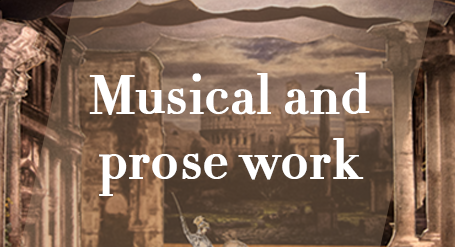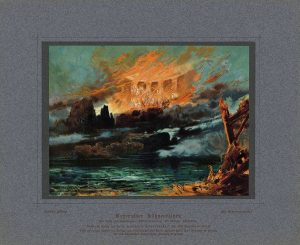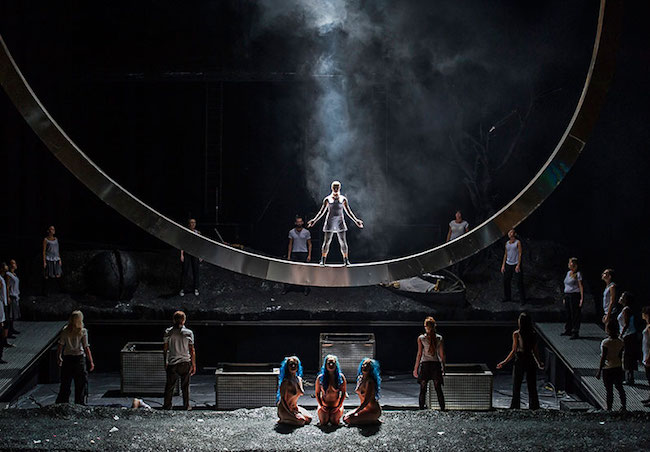
The musical work of Richard Wagner is composed of operas or “musical dramas” ranging from “Fairies” (Die Feen) to “Parsifal”. A detailed presentation of each of these major works is associated here with a set of thematic articles, placing them not only in the context of his personal life but also in his social, economic and cultural context. This section also includes all the musical works (excluding opera) and his literary work.
TWILIGHT OF THE GODS, WWV86D
Götterdämmerung, WWV86D
Fourth of the four dramas
from Richard Wagner’s cycle Der Ring des Nibelungen
Premiere:
17. August 1876 (Bayreuther Festspielhaus)
led by Hans Richter
Cast:
Siegfried (tenor)
Gunther Gibichung (high bass)
Hagen (bass)
Alberich (high bass)
Brünnhilde (soprano)
Gutrune (soprano)
Waltraute (mezzo-soprano)
First Norn (contralto)
Second Norn (mezzo-soprano)
Third Norn (soprano)
Rhinemaidens:
Woglinde (soprano)
Wellgunde (mezzo-soprano)
Flosshilde (contralto)
Chorus (vassals, women)
Duration: 4hrs.15
![]()
Götterdämmerung (Twilight of the Gods), WWV 86D, is the last in Richard Wagner’s cycle of four music dramas titled Der Ring des Nibelungen (The Ring of the Nibelung, or The Ring for short). It received its premiere at the Bayreuth Festspielhaus on 17 August 1876, as part of the first complete performance of the Ring.

“Bayreuther Bühnenbilder. Der Ring der Nibelungen. Götterdämmerung, III. Aufzug Schlussbild” – Reproduction of the set design by Max Brückner of the final scene from Richard Wagner’s en:Götterdämmerung, showing Valhalla on fire.
The title is a translation into German of the Old Norse phrase Ragnarök, which in Norse mythology refers to a prophesied war among various beings and gods that ultimately results in the burning, immersion in water, and renewal of the world. However, as with the rest of the Ring, Wagner’s account diverges significantly from his Old Norse sources.
Two extended orchestral selections—”Dawn and Siegfried’s Rhine Journey”, an abridged excerpt from the Prologue without the singers; and “Siegfried’s Funeral March”, lifted uncut from act 3—are often presented outside the opera house, and are published separately from the lengthy work. Early versions of these selections were approved by Wagner. These excerpts include specially composed endings so that the excerpt is better able to stand on its own as a complete composition.
Other notable excerpts include:
- Siegfried and Brünnhilde’s duet (Prologue). This is part of “Dawn and Siegfried’s Rhine Journey”.
- Hagen’s Watch (Act 1)
- Hagen summons the vassals and the Wedding March (Act 2)
- Brünnhilde’s Immolation Scene (Act 3) as a soprano solo with orchestra (Hagen’s single line is omitted). (read more…)
If you wish to share further information about this article, please feel free to contact us !
